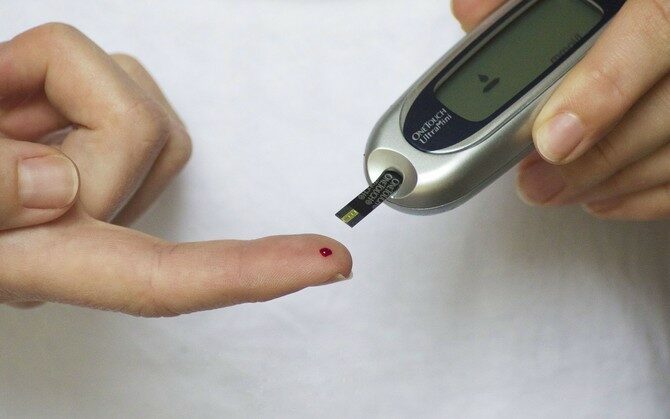Type 2 diabetes is preceded by a shorter or longer period of prediabetes. It significantly reduces the quality of life and poses a risk of developing complications. However, the timely discovery of prediabetes notably reduces the likelihood of it developing into the disease itself.
Although people with prediabetes have no observable symptoms, their blood sugar level is higher than normal and 70% of them develop diabetes. Thus, the early discovery of prediabetes is a way to prevent the development of diabetes or to postpone it substantially.
Grete Pihlapuu, a nursing student at Tartu Health Care College, who defended a thesis on this subject, points out that this primarily involves lifestyle changes in terms of diet and physical activity.
Pihlapuu works at the emergency medicine department of Tartu University Hospital and with the University of Tartu’s neuropsychopharmacology research group. Her thesis was supervised by Mariliis Vaht, a research fellow of neuropsychopharmacology at the University of Tartu.
Vaht explained that the complications of fully developed diabetes include kidney, eye, nerve and vascular damage which significantly reduce quality of life and the ability to work while also increasing the risk of certain cancers.
“Excess sugar in the blood has a toxic effect, damaging blood vessels, the heart and nerves and thereby organs as a whole,” she added.
Why do we get diabetes?
Type 2 diabetes is always preceded by a shorter or longer period of prediabetes. It is a lifestyle-related condition where the fasting blood sugar level consistently exceeds the healthy norm.
The most frequent risk factors for prediabetes and type 2 diabetes are depression, being overweight, a lack of physical activity, an unhealthy diet and the presence of diabetes among close relatives.
The risk of getting prediabetes is made greater by familial habits, especially at a younger age. The unhealthier the family’s diet and the less they are physically active, the greater the probability that the child carries these habits into adulthood.
The child’s risk of developing prediabetes is also significantly increased if the mother suffered from gestational diabetes during the pregnancy. “Therefore, it is necessary to instil the importance of healthy eating and physical activity into children,” emphasized Grete Pihlapuu.
At the same time, she acknowledged that diagnosing prediabetes is complicated, as it has no definitive symptoms. Often it is overshadowed by another disease that prompts a visit to a primary health care professional.
“Even though the organism can cope with elevated blood sugar levels for a relatively long period of time in the prediabetes phase, the activity of insulin-producing cells has already decreased by half. This is due to the damage caused by the excessive blood sugar,” said Pihlapuu.
“A processed, high-calorie and low-nutrient diet causes a sharp increase in blood sugar and lipids in the blood. This causes oxidative stress in the organism. An inflammatory reaction follows, which damages organs, blood vessels and nerves. Smoking and excessive alcohol consumption further increase the body’s inflammatory reaction.”
How to avoid diabetes?
Grete Pihlapuu’s thesis found that a person with prediabetes is, in general, overweight and depressed, smokes, eats unhealthily, moves little and has diabetes in their family.
Pihlapuu also recommends paying more attention to women with polycystic ovary syndrome as they have a greater risk of developing prediabetes. It is often accompanied by depression.
Pihlapuu emphasizes that even if someone has a genetic predisposition for diabetes, the risk of developing the disease can be decreased by up to 90% by simply making their daily routines a little healthier.
“To decrease the risk of prediabetes, priority should be given to losing excess body weight. The amount of fast-absorbing carbohydrates in the diet should be decreased significantly and healthier food should be preferred,” recommends Pihlapuu.
“Unhealthy food contains large amounts of refined starch, sugar and saturated and trans fats. It also contains little omega-3 fatty acids and antioxidants as well as fibres attainable from fruit, vegetables and wholegrains. The amount of physical activity should be increased, and smoking and excessive alcohol consumption should be given up. Attention should also be given to mental health, which strongly influences eating and exercise habits.”
The translation of this article from Estonian Public Broadcasting science news portal Novaator was funded by the European Regional Development Fund through Estonian Research Council.
 Back
Back



